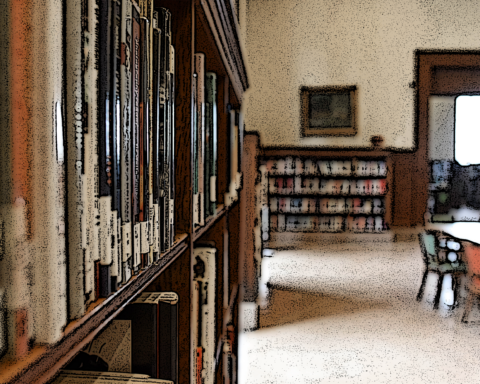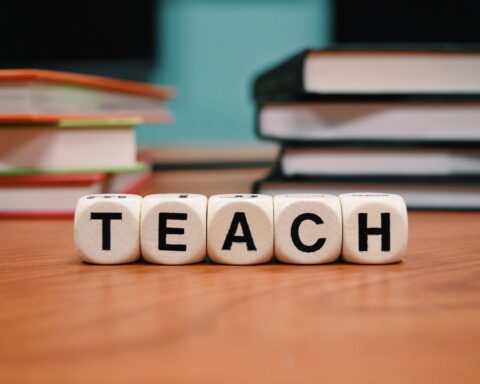Asking the Right Questions

There are two fundamentally different ways to start.
You can start by asking questions like, “What is the future of ecumenism in the Presbyterian Church (U.S.A.)?” Or even “What does the future of institutionalized denominations hold?”
These questions are important, but counterintuitive as it might seem, I’m not convinced they are the starting place for ecumenical collaboration and dialogue.
At St. Andrew Presbyterian Church in Boulder, CO, we stumbled into ecumenism by asking another set of questions. As racism and violence rippled across the country, we began seeking to discern how God might be calling us to be peacemakers. We began to ask whether there was anything we could do, even on a small scale, to address the injustices we were witnessing in God’s world.
We started by asking questions like the following:
What are the things that make for peace? Can you have peace without justice? Without education? What is the role of education in promoting peace? How do we practice peacemaking in a world saturated with violence in the media?
___________________________________________
Looking back to some of the earliest institutional ecumenical programs for children and youth, like those offered by the YMCA, the focus on accessibility becomes clear.
___________________________________________
With these questions guiding our conversation, we began to discuss the youth and children in our midst. We talked about how many of our young people are exposed to more examples of violence than peace efforts through the media. We determined that one way that we could seek peace in our context was to focus on the next generation, and from this conversation, Peace Camp was born! Our congregation partnered with Mountain View United Methodist Church and Jewish Congregation Har HaShem to offer a camp for second-through-fifth-graders in the greater Boulder area. The goal of this camp was to give children practical tools for conflict resolution in their lives.

There are many ways to structure a peace camp or do peacemaking with children in general, but one of the most important elements is making these programs available not only for the children of congregation members, but for all the children in the community. Looking back to some of the earliest institutional ecumenical programs for children and youth, like those offered by the YMCA, [1] this focus on accessibility becomes clear. However, one could argue that contemporary ecumenism has lost this fervor. We didn’t want to fall into that trap, so we intentionally adopted an ecumenical strategy that we hoped would make us more accessible to the larger community.
As we developed our Peace Camp, our group of mostly Presbyterians, Methodists, and Jews discerned that in our community, it was important to link ecumenism to justice and education. While some of our schools teach these values, many of our churches have not typically been active in these kinds of work. However, our three faith communities share the conviction that we have an essential call to educate people, especially children, about peacemaking, as a core aspect of the Christian and Jewish faith traditions. In the face of the inequalities and violence of today’s world, we confessed that inactivity on our part would be akin to deadly silence.
___________________________________________
Peacemaking should also strive to heal the spiritual wounds in all of us, for those wounds are often the roots of our hatred and harm towards others.
___________________________________________
We sought to develop ways for campers to learn about peace in ways that engaged their creativity and utilized all of their senses. Campers made crafts and played games to help them learn about peacemaking. They learned the story of Sadako and the Thousand Paper Cranes, [2] the story of a young Japanese girl who became sick with leukemia as a result of the atomic bomb in Hiroshima. Sadako had a dream to fold one thousand paper cranes so that her wish for peace and wellness would be granted, but she died before she could finish. To spread Sadako’s message of peace, children all around the world contribute to folding paper cranes. Our Peace Campers respond to this story by making their own origami cranes. They learned more about what different religious traditions have in common and created Tree of Life collages. They also played hug tag, a variation of tag that requires kids to hug each other, and untangled a human knot.

Jeremy, the youth director from Congregation Har HaShem, also taught the children about the history of violence in the Middle East, particularly between Israel and Palestine. He explained which models of peacemaking have had more success than others. By the time he was done, the Peace Campers felt ready to solve all of the problems in the Middle East, even the world!
At its foundation, we believe that peacemaking should also strive to heal the spiritual wounds in all of us, for those wounds are often the roots of our hatred and harm towards others. We worked with peace campers on how to be aware of and manage emotions like anger, sadness, jealousy, and disappointment. We talked about prejudice, racism, and other obstacles to justice and peace in our society and around the world. We looked for ways to demonstrate to campers that peace does not exist in a vacuum; it relies on the eradication of injustice.
___________________________________________
I believe that when we do this sort of peacemaking work with children, we plant a seed.
___________________________________________
I believe that when we do this sort of peacemaking work with children, we plant a seed. No matter how small that seed may be, if we continue to nurture it, it will grow. The Peace Campers were given a tangible reminder of this when they decorated their own ‘Peace Seed Pots’, filling them with very small seeds that, if nurtured, can grow into budding plants.
 One of the pitfalls of denominations of any religious sect is becoming tunnel-visioned, particularly in our education. We often want to define our pedagogy by our interpretation of the Bible and our specific group norms. If we truly want to come together in the ecumenical ministry of peacemaking, we adults have to put aside our own pride and differences. We, too, must “be transformed by the renewing of our minds” and “to not think of ourselves more highly than we ought to think” (Romans 12: 2-3). We need to be the kind of peacemakers that we are trying to teach our children to be.
One of the pitfalls of denominations of any religious sect is becoming tunnel-visioned, particularly in our education. We often want to define our pedagogy by our interpretation of the Bible and our specific group norms. If we truly want to come together in the ecumenical ministry of peacemaking, we adults have to put aside our own pride and differences. We, too, must “be transformed by the renewing of our minds” and “to not think of ourselves more highly than we ought to think” (Romans 12: 2-3). We need to be the kind of peacemakers that we are trying to teach our children to be.
The late Archbishop Dom Hélder Camara exhorts followers of Jesus to “honor the Word eternal and speak to make a new world possible.”
It turns out that when we plant those seeds and speak a new world for our children, we also speak a new world for ourselves.
_________________________________________
[1] “Ecumenical Chronicle: The YMCA, the Church and Christian Unity,” The Ecumenical Review, 10, no. 2 (1958).
[2] Eleanor Coerr and Ronald Himler, Sadako and the Thousand Paper Cranes (New York: Penguin Putnam Books, 1977).
AUTHOR BIO: Blair Buckley is the Director of Youth and Children’s Ministries at St. Andrew Presbyterian Church in Boulder, Colorado. She has served in a variety of ministry contexts, including chaplaincy, mission service with the Young Adult Volunteers program, and an internship with the national office. No matter her ministry context, her vocation is to share God’s expansive love amidst the multiplicity and disquiet of today’s world, helping people of all ages to find wholeness in Christ.





Unbound Social